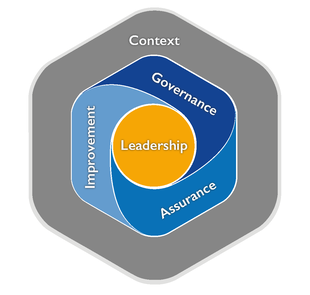
Frequently Asked Questions: Typical Competence Profiles
We've compiled a list of frequently asked questions (FAQs) about Typical Competence Profiles and the Career Pathways Map. Whether you're exploring career options, assessing your own skills or those of your team, or aiming to develop your competence, these resources are here to support you every step of the way.
What does each Tier mean?
Each tier represents a distinct level of competence as defined by The Profession Map, ranging from foundational to advanced capabilities. For example, Tier 1 indicates a developing level of knowledge and skills, while Tier 4 reflects advanced competence often seen in senior professionals subject matter specialists, and those in advisory and consulting roles. Each tier is aligned with specific responsibilities, functions and expectations within quality, helping professionals assess where they sit and where they can grow.
Refer to The Profession Map frequently asked questions for specific definitions of each tier.
How did we determine the appropriate tier of competence for each typical role profile?
Each profile was created using a combination of self-assessment data and rigorous statistical analysis. The data provided by quality professionals in specific roles helped identify the mode – the most commonly identified tier of competence – for each component of The Profession Map. This approach ensures that the tier assigned to each component within a profile accurately reflects the competence typically found in that role.
How have you ensured that the profiles are an accurate representation of the typical competence of a quality professional in each role?
The profiles are based on self-assessment data from a representative sample of quality professionals in each role. Extensive statistical testing was conducted to verify the reliability of each component of each profile, and confidence intervals were used to account for possible variations within the sample.
Each profile was tested and verified by a Project Guidance Panel of quality professionals.
Why is my role missing from the Career Pathways Map?
The Career Pathways Map currently includes a selection of roles that represent the most common roles within the quality profession, based on CQI membership data. If your specific role title is missing, it may be due to its lower frequency among members or because it overlaps with another listed role. We plan to expand the map as more data becomes available, ensuring broader representation in the future.
What job titles are included for each role?
Each profile represents a core quality role, such as Quality Coordinator, Quality Manager and Lead Auditor, and includes a range of job titles that frequently appear in CQI membership data. For example, the Quality Manager profile covers variations like Quality Assurance Manager, QA/QC Manager and Senior Quality Engineer. The aim is to make each profile relevant to the broadest possible range of related titles.
How did you determine which roles to produce profiles for?
The initial set of profiles was developed by identifying the most common roles within the quality profession based on CQI membership data. These roles - such as Quality Engineer, Quality Director and HSEQ Manager – were selected for their high frequency and representative value within quality teams and organisations. Future profiles will be created based on additional data and member feedback.
How did you map out the Career Pathways Map?
The Career Pathways Map was developed by analysing data on CQI member roles and observing how professionals progress through different stages of quality careers. Grouping roles into broad categories, the map shows potential career routes across specialisms and levels. To ensure accuracy, we consulted the Project Guidance Panel, which helped verify that the pathways reflect realistic and achievable career progression.
Are these profiles a universal standard for quality professionals?
No, the Typical Competence Profiles are not intended as a universal standard. Rather, they provide a realistic benchmark for what’s typical in each role based on data from quality professionals. They serve as a helpful reference for assessing and developing your competence but are flexible enough to be adapted to individual or organisational needs.
How can these profiles help with career planning?
The profiles and Career Pathways Map are tools for self-assessment and development planning. By identifying where you stand across the competence tiers, you can set clear goals for professional growth. Whether aiming to advance within your role or explore new areas, these resources help guide your progress and plan effective career steps.
Will there be profiles for more roles?
Yes, this is only the first set of profiles, covering six roles. Expanding the profiles is part of CQI’s ongoing commitment to supporting the quality profession with accurate, evidence-based resources, and we’ll be adding more profiles to cover a broader range of quality roles.
Can employers use these profiles in recruitment or team development?
Absolutely. The Typical Competence Profiles offer employers a structured way to benchmark and assess the competence levels of team members. This can be invaluable for recruitment, role definition, and development planning. By aligning team capabilities with The Profession Map, organisations can better support quality professionals in fulfilling strategic goals.
For any further questions,
please email policy@quality.org
Discover Typical Competence Profiles

Typical Competence Profiles and Career Pathways Map, navigating your career pathway
The Profession Map

Your route to success - equipping modern quality leaders to meet evolving business demands.



